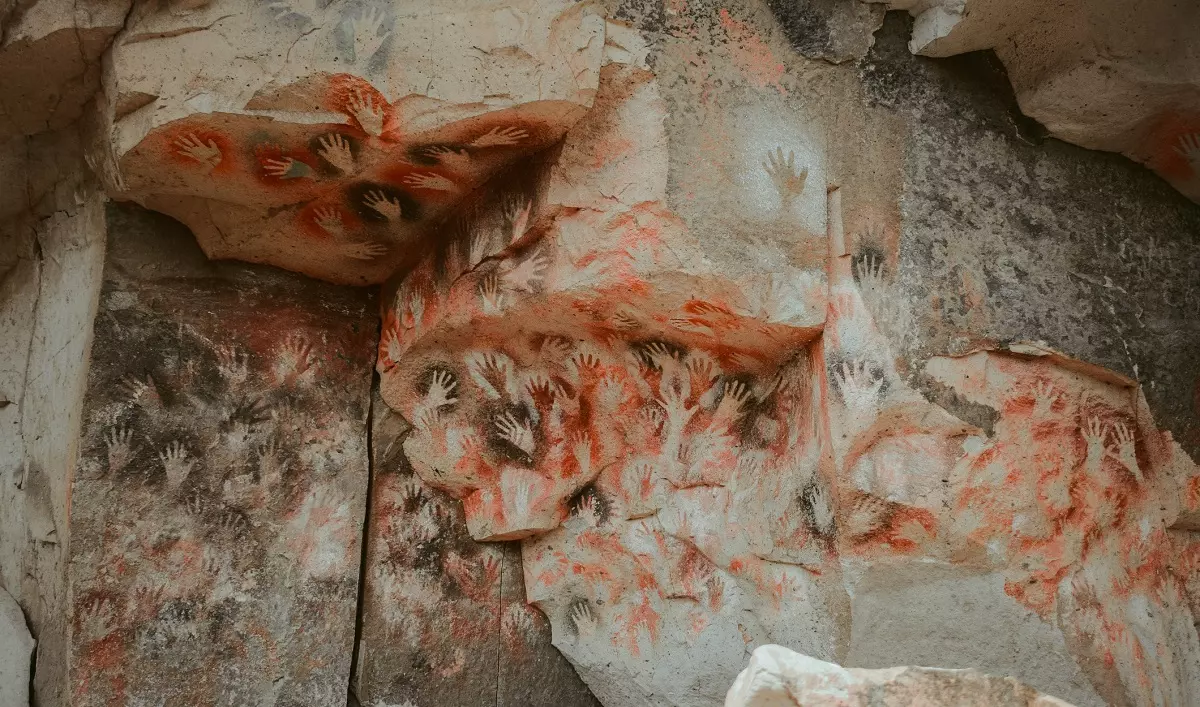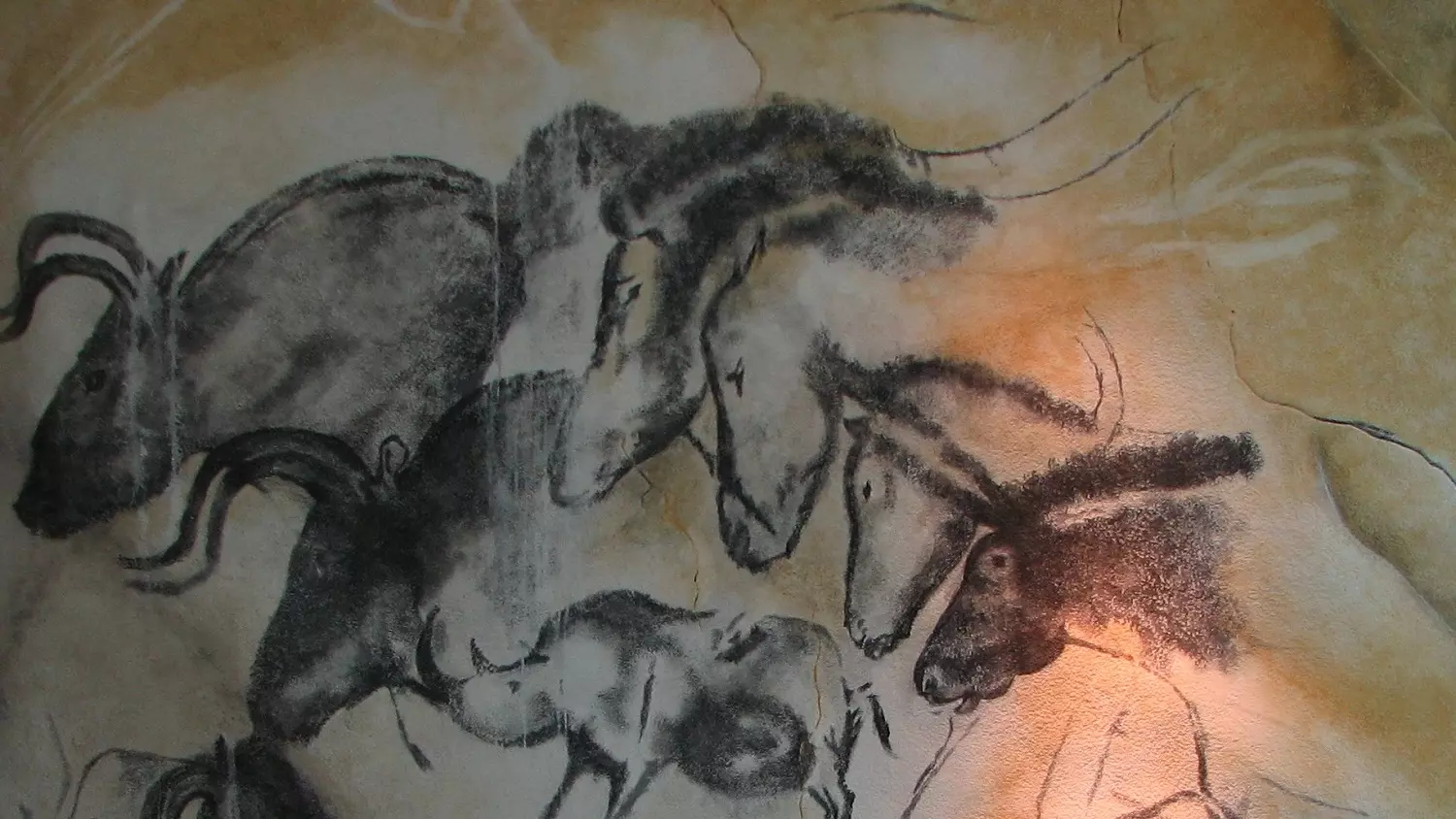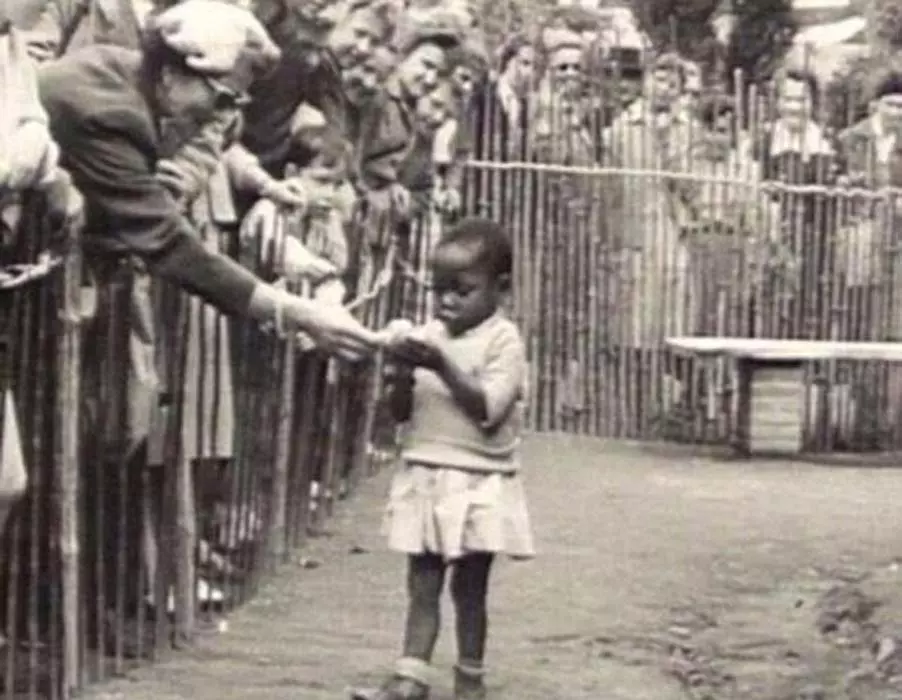Have you seen the famous “Horse Panel” in the Chauvet Cave of France? The smooth brushstrokes evoke the feel of movement in a way that makes the heart yearn to run with these majestic creatures. If the central motif of four horses were transposed to a canvas and hung in a gallery, you would never guess it was painted at the dawn of humanity. But a closer look at the surrounding aurochs and woolly rhinoceroses exposes the reality that this was painted by someone who saw animals long ago extinct.
And this cave painting is hardly the only one. In places across France and Spain we find many such human cave decorations, as well as in locations as far away as South Africa, Australia, and China.
But how long ago did such art get made?
It depends on whom you ask
Carbon-14 dating of the charcoal and organic pigments is a technique scientists have been using for several decades. While it bothers everyone how small the samples they can collect from the art itself must be, they can collect larger pieces from the firewood nearby. Assuming these fires were burned at the same time, they provide enough material to give a more acceptably accurate answer.
The only problem: the answer that comes back is too old even for the naturalists. Many of these cave remains date back to as much as 30,000 year old using this method. And this is troubling to people who want to have early humans barely able to stand upright. So, they are comfortable admitting how unreliable these results could well be—although for different reasons than we point to.
Then we began using radiometric dating of the flowstone that formed after the art was made. These element tests are considered the gold standard of absolute dating in geology. For example, the dating of meteorite elements is where they come up with the standard age of the earth as 4.6 billion years old.
So, it caused waves when these tests dated the rock we know formed more recently than the human artwork as far back as 40,000 years ago. Humans? This skilled that long ago?
Because of such findings, the past two decades has seen the anthropological community experience a sea change in how they view early people, especially Neanderthals.
Today’s naturalistic anthropologists may be making their peace with smart humanity going back much further in time than they would have liked from an evolutionary time frame, but we know the entire universe isn’t half of 40,000 years old.
The oldest known cave painting is a red hand stencil in Maltravieso cave, Cáceres, Spain. It has been dated using the uranium-thorium method to older than 64,000 years and was made by a Neanderthal. ~Wikipedia
What do biblical creationists see in these early dates?
First we start with the eyewitness testimony we hold in our hands preserved as God’s Word, the Bible. When we remember to factor in what the naturalist dare not—that the whole world was radically transformed by a global flood—it doesn’t take long to find other solutions to the mystery.
Carbon-14 dating is a creationist’s friend. Every bit of once-living material we have ever dated gives an age well within the half-life of this element. After as little as a quarter of a million years there should be so little C-14 left in remains that it should be undetectable. Yet, when we test wood buried deep in a coal seam, it tests to around 40,000 years old. And unfossilized dinosaur bone has dated as young as 33,000 years old using this method!
The other radiocarbon dating methods super-accurately report results that require a whole suite of assumptions to accept as absolute dates. And, when we already know the age of a rock because people were there when it formed, radiometric dating typically gives dates that are wildly inflated.
So, we don’t feel any need to throw away the testimony of God and his people for the claims of today’s scientists and their fancy lab equipment.
Start At the Source

Instead, we start with the account given us in the Bible. And there we find a straightforward telling of the major catastrophe that first reset the world with a thorough scrubbing and fresh set of rocks and caves. Then we see signs of a rapidly changing climate and an extended period of adjustment before reaching a new kind of normal.
Using today’s science we can explain a number of ways the flood and following Ice Age would affect the amount of Carbon-14 in something alive at those times. And we don’t have to assume all things have remained exactly as they are since the beginning—we know they haven’t!
Then we go to our history to find out when people would have first visited these newly formed caves to decorate. Genesis chapter 11 gives us the account of what Noah’s descendants did as they settled down after the flood and started their families. Anyone who was anyone stayed in one spot, focused on building a monument to themselves—until one day God scattered them by changing their languages.
We probably will never know exactly how long after the flood this occurred but it wasn’t tens of thousands of years later. And when they scattered, they really scattered. The record of humanity across the globe goes from nothing to artwork that had “grace from the start” overnight.
We would place these cave paintings as first being brushed on somewhere around 4,000 years ago, starting a few generations before Abraham.
The secular world is committed to deep time. Without it they have no chance of believing all things came to be without a creator. Even when they don’t like the implications of their testing, they are stuck with it. Because the only alternative is to admit God is reliable, he judged the world in the past, and is our only hope for escaping the judgement he has promised in the future.
Dedicated to my longtime blogging friend, Anne Marie of Future Flying Saucers, and to all the other parents and teachers who love history, art, and Jesus.







